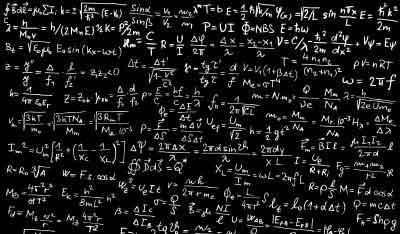Quantum physics is, for laypeople, mind bending stuff. The good news is that it also bends the minds of physicists, who continue to wrestle with the reality problems and paradoxes created by quantum mechanics. While quantum equations clearly work and have real world applications (hello atom bomb), no one is quite sure how or why.
Given all the weirdness that surrounds the subject, it’s rare to encounter a cogent exposition, one that non-physicists can (with effort) comprehend. For those who have despaired of ever understanding the issues, I recommend this essay by Adrian Kent. These passages, in particular, really resonate:
If we cannot get a coherent story about physical reality from the Copenhagen interpretation of quantum theory and we cannot get a scientifically adequate one from many-worlds theory, where do we turn? We could, as some physicists suggest, simply give up on the hope of finding any description of an objective external reality. But it is very hard to see how to do this without also giving up on science. The hypothesis that our universe began from something like a Big Bang, our account of the evolution of galaxies and stars, the formation of the elements and of planets and all of chemistry, biology, physics, archaeology, paleontology and indeed human history – all rely on propositions about real observer-independent facts and events. Once we assume the existence of an external world that changes over time, these interrelated propositions form a logically coherent set; chemistry depends on cosmology, evolution on chemistry, history on evolution and so on. Without that assumption, it is very hard to see how one might make sense of any of these disciplines, let alone see a unifying picture that underlies them all and explains their deep interrelations and mutual dependence.
If we can’t allow the statement that dinosaurs really walked the Earth, what meaningful content could biology, paleontology or Darwinian evolution actually have? It’s even harder to understand why the statement seems to give such a concise explanation of many things we’ve noticed about the world, from the fossil record to (we think) the present existence of birds, if it’s actually just a meaningless fiction. Similarly, if we can’t say that water molecules really contain one oxygen and two hydrogen atoms – or at least that something about reality that supports this model – then what, if anything, is chemistry telling us?
Physics poses many puzzles, and the focus of the physics community shifts over time. Most theoretical physicists today do not work on this question about what really happens in quantum experiments. Among those who think about it at all, many hope that we can find a way of thinking about quantum theory in which reality somehow evaporates or never arises. That seems like wishful thinking to me.
The alternative, as John Bell recognised earlier and more clearly than almost all of his contemporaries, is to accept that quantum theory cannot be a complete fundamental theory of nature. (As mentioned above, Einstein also believed this, though at least partly because of arguments that Bell was instrumental in refuting.)
Bell was one of the last century’s deepest thinkers about science. As he put it, quantum theory ‘carries in itself the seeds of its own destruction’: it undermines the account of reality that it needs in order to make any sense as a physical theory. On this view, which was once as close to heresy as a scientific argument can be but is now widely held among scientists who work on the foundations of physics, the reality problem is just not solvable within quantum theory as it stands.
This is delightfully dialectical and refreshingly honest. Kent does not go on to suggest that these issues are intractable or that they are not amenable to scientific inquiry, testing, and verification.
His essay, in other words, is not a warrant for mysticism. It is a frank and humble assessment of current knowledge. There is much to be discovered.


